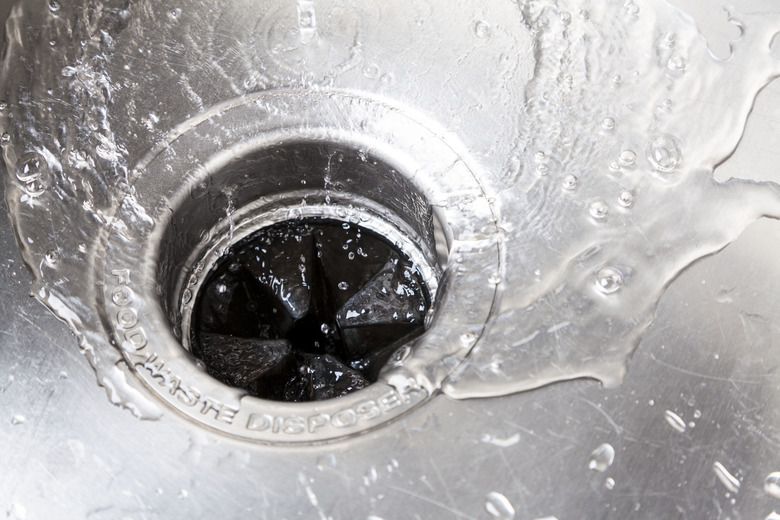How To Troubleshoot Loose Blades In A Garbage Disposal
We may receive a commission on purchases made from links.
Here's a news flash for anyone who thinks rattling sounds, poor grinding performance, frequent clogs, or any other garbage disposal malfunction is caused by the garbage disposal's loose blades: Garbage disposals don't have blades. Those oblong metal parts you see on the bottom of the disposal flywheel aren't blades. They are impellers, and they're supposed to be loose.
If you concluded they are loose by wiggling them with your fingers, don't do that if you value your fingers. The actual sharp part of the disposal is situated around the perimeter, and you can cut yourself on it even if you unplugged the disposal and are sure it won't turn on. If you didn't unplug the disposal before reaching in and nothing happened, consider yourself lucky but beware: You might not be as lucky the next time. Always use tongs to reach into a garbage disposal or to check the impellers.
How a Garbage Disposal Works
How a Garbage Disposal Works
The part of a garbage disposal that macerates food waste is called the shredder ring. It's like a circular cheese grater. It's just a few inches wide, and it lines the periphery of the canister just above the rotor, which is the flat, circular plate that spins when you turn on the machine. The purpose of those oblong impellers that you might have thought were blades is to fling food scraps against the shredder.
The impellers are loose because that allows them to oscillate when the rotor is spinning, which helps them develop more flinging force. It's possible for them to get too loose, but it's rare, and if that happens, you would have to disassemble the garbage disposal to tighten them, and that may not even be possible. It's a big job with an uncertain outcome, so it's usually more cost effective to replace the disposal.
Causes of Loud Noises and Malfunctions
Causes of Loud Noises and Malfunctions
If you hear a loud, rattling sound coming from your garbage disposal, the reason is almost always that something hard, like a bone, is flying around inside it. Of course, if the disposal is very old, some part of the motor may have worked itself loose, but if that happens, the disposal will probably stop working altogether.
If you find that the disposal is taking longer than it should to grind food or if it gets frequently clogged, there's probably an issue with the shredder ring, and the most common problem is simple clogging. Just like a cheese grater, a shredder ring can get clogged not with cheese but with starchy foods, like potatoes, pasta, or rice. These are examples of food items (there's a long list) that you shouldn't put in the garbage disposal.
How to Fix a Garbage Disposal
How to Fix a Garbage Disposal
If your garbage disposal is clogged, food waste is more likely to get stuck between the shredder ring and the rotor and prevent the rotor from spinning. To stop the motor from burning out, an emergency cut-off switch stops the unit from operating. You can restore operation by using a garbage disposal wrench to manually spin the rotor to remove the blockage and then pressing the reset button. If you have to do this often or you often hear rattling sounds from objects that haven't been ground, the shredder ring is probably clogged, and there's a simple way to unclog it.
Fill the unit with ice and then add a cup of large-grain kosher salt to lower the melting point and in effect make the ice colder. This will solidify the starches clogging the shredder ring. After an hour or so, turn on the disposal and grind the ice and it will remove the hardened starches from the ring. After you're finished, grind a few lemon or orange peels to deodorize the unit and refrain from grinding starchy foods in the future.
